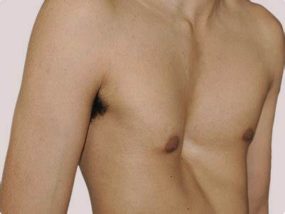Prevalence, Symptoms and Causes.
As many as one in 500 children are born with chest deformities, which either causes the chest wall to appear sunken in (Excavatum) or to protrude (Carinatum). Excavatum is twice as common affecting about 1.275% of people whereas Carinatum affects about 0.675% people.
Pectus Carinatum, is a non-life-threatening condition. It’s marked by an abnormally outward protruding breastbone caused by rapid cartilage overgrowth forcing the front of the chest cavity outward. Occasionally, symptoms are present from birth or early childhood, but it’s most commonly diagnosed around 11 or 12 years of age. For most people, Pectus Carinatum is asymptomatic and is an aesthetic issue only. In more severe cases, symptoms may also include chest pain, fatigue, difficulty breathing during physical activities, recurring respiratory infections, and asthma.
While its cause is unknown, it appears to be more common in boys, and there seems to be a hereditary component. Pectus Carinatum may be associated with some inherited connective tissue disorders such as Marfan syndrome, Homocystinuria and Ehlers-Danlos syndrome. It is also known to be more common in Caucasians than people of other races.


